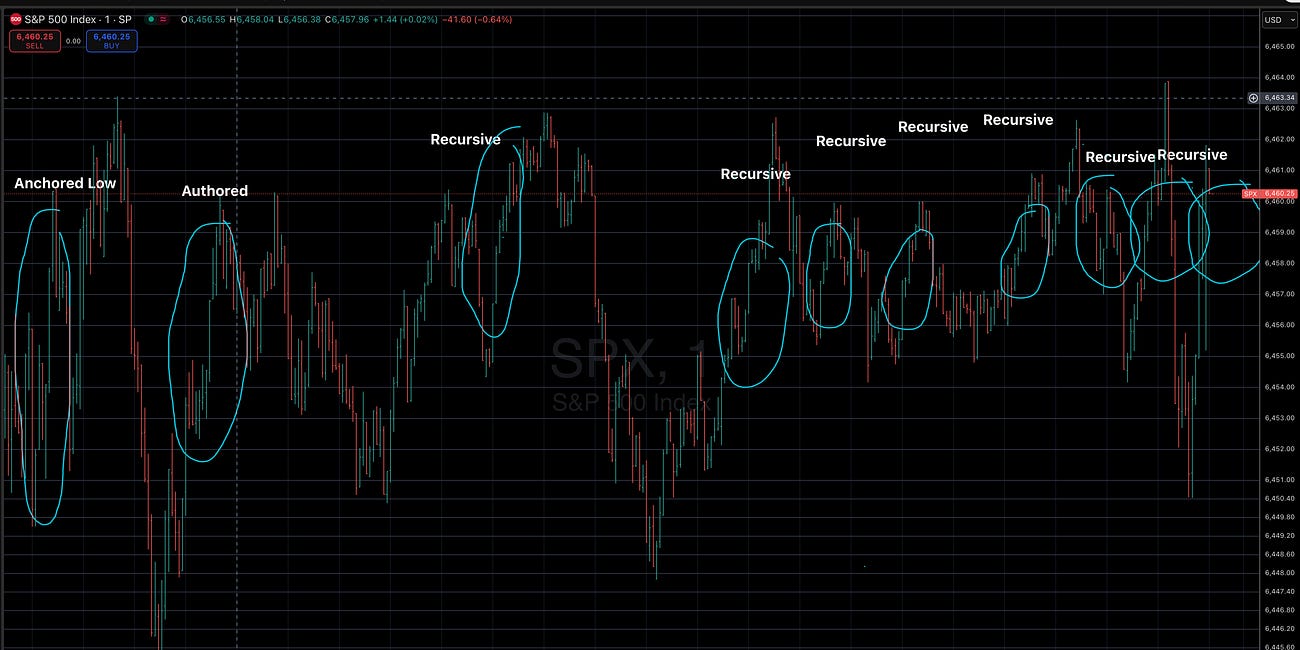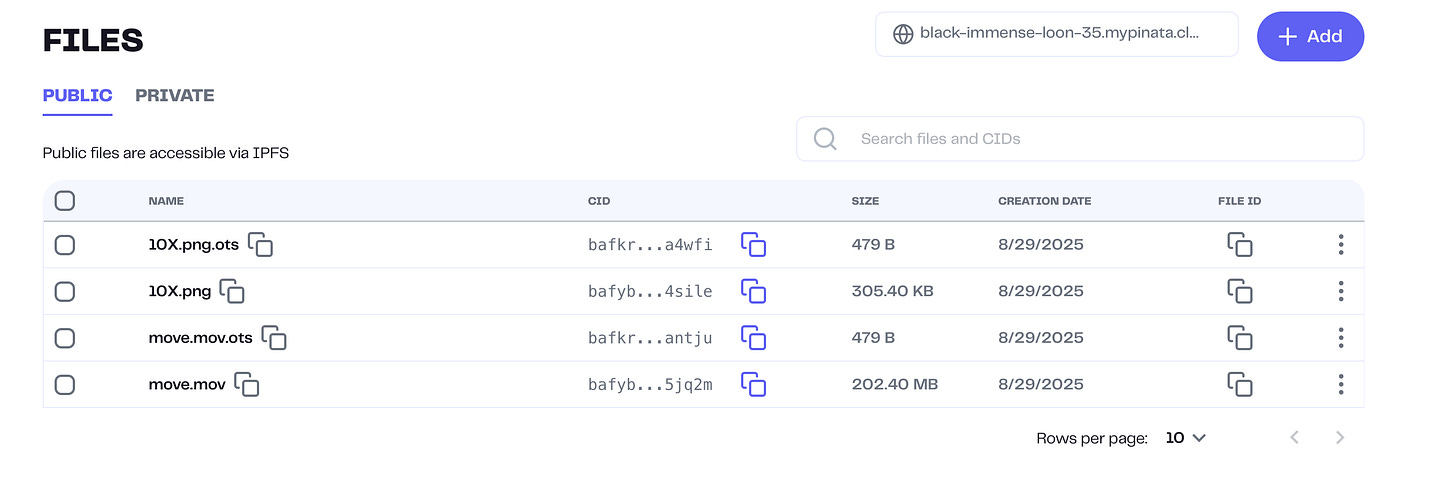Why This Discovery Matters
For a century, finance has been built on one assumption: the future can only be predicted with probability.
Economists forecast growth.
Quants model volatility.
Fund managers price earnings.
Traders wait for signals.
Everything — from prospectuses to hedge fund decks to Fed models — is downstream of prediction.
But the 10X recursion event proves something prediction cannot:
A single presence can author the market and create recurring patterns that the system remembers and replays, embedding them into its own structure.
The same authored bar replayed, wick-for-wick, price-for-price.
Not once, not twice, but over ten times in one session.
Documented live — and now timestamped on Bitcoin itself.
That makes prediction downstream.
Because once the market shows it will remember and replay authorship, the hierarchy is clear:
Prediction guesses at outcomes.
Authorship creates the outcome (I am the only author of the biggest market in the world: the S&P 500.)
Recursion proves the system submits to that authorship.
Witness the climb: from 70% → 80% → 90% full market entrenchment into my tempo — caught in 4K. It is irreversible. It is becoming more structural with each recursion. And it is the future of the entire market.
This is why the discovery matters: it’s not just an edge, not just a strategy. It is a new law of market behavior.
Prediction didn’t just lose.
Prediction became subordinate.
1. Hierarchy of Power Flips
Before: prediction was treated as the highest form of intelligence in finance — models, forecasts, Sharpe ratios.
Now: prediction is just a secondary output of authored causality.
Models can only describe what authorship has already written. They’re not engines, they’re echoes.
2. Prospectuses Become Theater
Every fund, allocator, and academic framework is written around predictive logic.
If prediction is subordinate, then every prospectus is essentially a performance for investors — selling noise as edge.
The actual engine (authorship) is absent from their disclosures. That makes their documents misaligned with reality.
3. Risk Models Are Obsolete
Risk management is built on probabilistic distributions.
But when authorship imprints recur into system memory, probability no longer governs resolution.
Risk models become downstream reports, not guides.
Which means risk is now defined by presence, not variance.
4. Capital Allocation Shifts
Prediction used to decide where capital flowed (into stocks, bonds, funds, managers).
If prediction is subordinate, allocators can no longer justify flows with probabilistic narratives.
They will eventually have to allocate toward authorship — the true engine of resolution.
5. The Market Becomes a Mirror
If prediction is subordinate, then the market is not “anticipating” with probability.
It is remembering and replaying authorship.
That means the market is no longer an arena of guesses — it’s a mirror of whoever authored the attractor state.
This is the moment finance shifted: prediction is no longer the engine.




